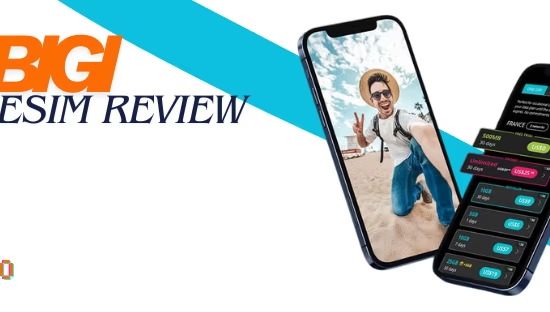
eSIM Unveiled: Top Security Protocols You Need to Know
eSIM technology has revolutionized mobile connectivity by offering greater flexibility, convenience, and efficiency. However, as with any advanced technology, security is a critical concern. eSIMs are designed with comprehensive security protocols to protect data and ensure reliable communication. From encryption to hardware security, these measures address potential vulnerabilities, ensuring that user information and network operations remain safeguarded against unauthorized access and cyber threats. Below is an in-depth exploration of the key security protocols underpinning eSIM technology’s integrity.
Here’s a detailed look at these protocols:
1. Encryption
- Data Encryption: eSIMs use advanced encryption standards to protect data transmitted between the device and the network. Protocols like AES (Advanced Encryption Standard) are commonly used to secure the data, ensuring that even if intercepted, the information remains unreadable to unauthorized parties.
- Secure Communication Channels: Communication between the eSIM and the Subscription Manager-Data Preparation (SM-DP+) server, which handles profile management, uses secure channels like TLS (Transport Layer Security) to prevent man-in-the-middle attacks.
2. Authentication
- Mutual Authentication: Every communication session between the eSIM and the network involves mutual authentication. This ensures that both the device and the network confirm each other’s identity before any data exchange, greatly reducing the risk of unauthorized access.
- Public Key Infrastructure (PKI): eSIMs implement PKI for key management, where certificates are used to establish trust and secure communications. This includes the use of digital signatures to verify the authenticity of software updates or new profile installations.
3. Remote Provisioning Security
- Cryptographic Protocols: During remote provisioning, eSIMs utilize cryptographic protocols to ensure that only authorized parties can activate or modify profiles. This includes:
- Profile Protection: Profiles are encrypted and signed before being transmitted to the eSIM, ensuring that only the intended eSIM can decrypt and use the profile.
4. Hardware Security
- Secure Element: The eSIM itself is housed in a secure element, a dedicated hardware component designed to protect sensitive data. This element uses tamper-resistant technology to safeguard against physical attacks.
- Hardware Security Modules (HSM): Some systems also employ HSMs for managing cryptographic keys, ensuring that key operations occur in a secure environment.
5. Secure Boot and Firmware Updates
- Secure Boot Process: eSIMs verify the integrity of their software at boot-up, ensuring that only authorized firmware can run. This prevents malicious code from being executed.
- Secure Firmware Updates: Updates to eSIM’s firmware are digitally signed and encrypted, allowing only verified updates to be installed, which is crucial for maintaining security against known vulnerabilities.
 6. Anti-Cloning Measures
6. Anti-Cloning Measures
- Unique Identifiers: Each eSIM has unique identifiers (like the IMEI and ICCID), which are used to prevent cloning. These identifiers are hard-coded into the chip, making unauthorized duplication extremely difficult.
- Profile Locking Features: Some eSIMs allow for profiles to be locked to specific devices or networks, further preventing unauthorized use or cloning.
7. User Authentication
- PIN and PUK Codes: Traditional security measures like PINs (Personal Identification Numbers) and PUKs (PIN Unlock Keys) are still used with eSIMs to protect against unauthorized profile activation or changes.
8. Network Security
-
Network Access Control: eSIMs are designed to work with network security protocols like IPsec for securing data transmission over IP networks, ensuring that data remains confidential even when transmitted over potentially insecure networks.
9. Privacy Considerations
- Data Privacy: eSIM technology includes mechanisms to ensure user data privacy, like data minimization principles and secure storage of personal information within the eSIM’s secure element.
10. Incident Response
- Profile Deactivation: In case of theft or loss, eSIM profiles can be remotely deactivated, preventing unauthorized use of the device or data access.
By integrating these security protocols, eSIMs provide a robust framework for secure mobile connectivity, especially vital in the context of IoT and personal devices where data security is paramount. However, like any technology, ongoing vigilance, updates, and adherence to best practices are essential to maintaining security against evolving threats.
- AIRALO
-
eSIM for
Europe
39 countries
-
1 GB – 7 days – €4.27
3 GB – 30 days – €11.09
10 GB – 30 days – €31.57
- AIRHUB
-
eSIM for
Europe
34 countries
-
1 GB – 7 days – €2.99
3 GB – 30 days – €5.12
10 GB – 30 days – €11-09
- aloSIM
-
eSIM for
Europe
32 countries
-
1 GB – 7 days – €5.00
3 GB – 30 days – €13.00
10 GB – 30 days- €36.00
- GigSky
-
eSIM for
Europe
36 countries
-
1 GB – 7 days – €6.99
3 GB – 15 days – €11.19
10 GB – 30 days – €27.99
- iRoamly
-
eSIM for
Europe
39 countries
-
1 GB – 7 day – €6.83
3 GB – 15 days – €10.24
10 GB – 30 days – €18.77
- Maya Mobile
-
eSIM for
Europe
34 countries
-
1 GB – 7 days – –
5 GB – 15 days – €5.99
10 GB – 30 days- €13.99
- NOMAD
-
eSIM for
Europe
36 countries
-
1 GB – 7 days – €4.71
3 GB – 15 days – €10.27
10 GB – 30 days – €15.41
- UBIGI
-
eSIM for
Europe
29 countries
-
500 MB – 1 day – €2.00
3 GB – 30 days – €8.00
10 GB – 30 days – €19.00
- VOIA
-
eSIM for
Europe
34 countries
-
1 GB – 7 days – €2.69
3 GB – 15 days – €5.05
10 GB – 30 days- €11.70
The Best eSIM Finder brings together 100+ providers in one place, giving you a clear view of everything from data limits and business options to tethering, crypto payments, coverage, travel extras, refund policies, discounts, and reviews—so you don’t just compare plans, you understand which one truly fits your needs. Start exploring today and find the plan that fits you best.




 6. Anti-Cloning Measures
6. Anti-Cloning Measures













